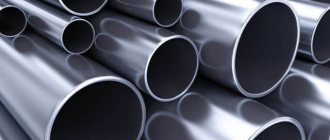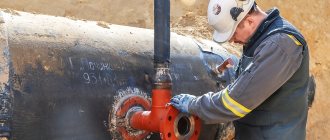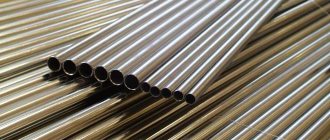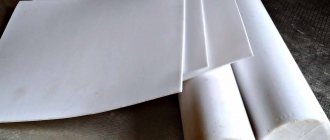It is difficult to imagine the modern world without plastic. Today, one third of everything that surrounds us consists of various types of plastic. We are so used to them that we don’t always notice them in everyday life. At the same time, plastics are a profitable business that brings its owners millions of dollars a year. Among them, the most common and most profitable is the production of polyethylene.
Polyethylene can be divided into two main subtypes: high-density polyethylene, produced under low pressure, and low-density polyethylene, produced under high pressure. It is LDPE - high-density polyethylene - that will be discussed in this article.
The scope of application of polyethylene is quite wide. For the most part, high-density polyethylene is used to produce films and various film products: thermal films, bags, multilayer food packaging, greenhouse films. Products made from high-pressure polyethylene are used in electrical engineering, chemical and food production, automotive industry, construction, etc. Pipes made from high-pressure polyethylene are characterized by unsurpassed strength and are recommended for installation in residential communication systems.
What is polyethylene
Polyethylene (PE) is one of the earliest large-scale and most common polymer materials.
It would not be an exaggeration to say that polyethylene is known to almost all people and this very concept in everyday life is synonymous with plastic as such. Non-experts often call many materials polyethylene that have nothing in common with it. PE is the simplest of polyolefins, its chemical formula is (–CH2–)n, where n is the degree of polymerization. The main types of PE are low-density polyethylene (HDPE), also known as high-density polyethylene (PVP, PEHD, HDPE) and high-density polyethylene (LDPE), also known as low-density polyethylene (PELD, LDPE). Next we will look at these and other types of PE in more detail.
Polyethylene is a synthetic polymer, it is obtained by polymerization of ethylene (chemical name - ethene) according to the free radical mechanism. Large-scale synthesis of LDPE and HDPE is produced by almost all of the world's leading oil and gas concerns. In Russia, polyethylene is produced at petrochemical plants of Lukoil, Gazprom, SIBUR, Kazanorgsintez and Nizhnekamskneftekhim. In the countries of the former USSR, the polymer is produced in Belarus, Uzbekistan, and Azerbaijan. Serial grades of polyethylene are produced in the form of granules measuring 2-5 mm, but there are also grades in powder form, for example, this is how ultra-high molecular weight polyethylene (UHMWPE) is produced for sale.
Fig.1. Polymer in granules
History of PE
Polyethylene has been around for over 100 years. It was first obtained by German engineer Hans von Pechmann in 1899; since then he has been considered the inventor of this polymer. But, as often happens, an important discovery did not immediately find application. It came only towards the end of the 1920s, and in the 1930s the production of polyethylene was finally established, in which engineers Eric Fawcett and Reginald Gibson played a major role. Initially, they synthesized a low molecular weight paraffin product, which can be called a polyethylene oligomer. As a result of a lot of work, in 1936, the engineers’ research to develop a high-pressure unit ended in obtaining a patent for LDPE (LDPE). In 1938, the production of commercial polyethylene started. Initially it was intended for the production of telephone cable sheaths and, somewhat later, for the production of packaging.
Technology for the production of high-density polyethylene (HDPE) also began to be developed in the 1920s. A major role in the production of this material was played by Karl Ziegler, a well-known inventor in the plastics industry of ion-coordination polymerization catalysts, the most important of which was later named after Ziegler-Natta. The process of obtaining HDPE was finally fully described only in 1954, and at the same time a patent was issued for it. Industrial production of new polyethylene with properties higher than LDPE started a little later.
Production of polyethylene
Let us briefly describe the production technology of both main types of polyethylenes.
LDPE
This polyethylene, as the name implies, is synthesized at elevated pressure. The synthesis is usually carried out in a tubular reactor or autoclave. Synthesis occurs under the influence of oxidizing agents - oxygen, peroxides, or both. Ethylene is mixed with a polymerization initiator, compressed to a pressure of 25 MPa and heated to 70 degrees C. Typically, the reactor consists of two stages: in the first, the mixture is heated even more, and in the second, polymerization is carried out directly under even more stringent conditions - temperatures up to 300 degrees C and pressure up to 250 MPa.
The standard residence time of the ethylene mixture in the reactor is 70-100 seconds. During this period, 18-20 percent of ethylene is converted into polyethylene. The unreacted ethylene is then recycled, and the resulting PE is cooled and granulated. The polyethylene granules are again cooled, dried and sent for packaging. Low-density polyethylene is produced in the form of undyed granules.
HDPE
HDPE (high density PE) is produced at low pressure in the reactor. Three main types of polymerization technical processes are used for synthesis: suspension, solution, gas-phase.
For the production of PE, a solution of ethylene in hexane is most often used, which is heated to 160-250 degrees C. The process is carried out at a pressure of 3.4-5.3 MPa during the contact time of the mixture with the catalyst for 10-15 minutes. The finished HDPE is separated by evaporating the solvent. Granules of the resulting polyethylene are steamed at a temperature above the melting temperature of PE. This is necessary to transfer low molecular weight fractions of PE into an aqueous solution and remove traces of catalysts. Like LDPE, finished HDPE is usually colorless and shipped in 25 kg bags, less often in big bags, tanks or other containers.
Types of polyethylene
In addition to the HDPE and LDPE described in detail in this article, the industry produces and uses numerous other types of polyethylenes, the main groups of which are:
LDL, LLDPE - linear low density polyethylene. This type is gaining more and more popularity. The properties of this polyethylene are similar to LDPE, but it surpasses it in many respects, including strength and product resistance to warping.
mLLDPE, MPE - metallocene LLDPE.
MDPE - medium density PE.
HMWPE, HMWPE, VHMWPE - high molecular weight.
UHMWPE, UHMWPE - ultra-high molecular weight.
EPE - foaming.
PEC – chlorinated.
There are also a large number of copolymers of ethylene with various other monomers. The best known of these are copolymers with propylene, which are produced under the general names random or static copolymer and block copolymer. In addition to them, copolymers of ethylene with acrylic acid, butyl and ethyl acrylate, methyl acrylate and methyl methyl acrylate, vinyl acetate, etc. are produced. There are also ethylene-based elastomers, they are designated by the abbreviations POP and POE.
Basic methods of connecting and installing LDPE pipes
Currently, there are several technologies for connecting LDPE pipes and fittings:
Docking using compression fittings.
The pipeline connection is carried out using special clamping and sealing rings. This method is easy to implement and does not require special equipment, but is not recommended for pressure systems and pipelines laid in hard-to-reach places. Used primarily for pipes with a diameter of up to 65 mm.
The compression assembly diagram is shown in the photo below:
Direct welding.
The technology involves the use of a special welding machine (soldering iron) with nozzles, with the help of which the outermost part of the elements to be connected is melted. The result is a strong, tight and durable joint.
Connection using electric welding fittings.
The fitting parts are equipped with a special spiral, which, when heated by a special welding unit, fuses the fitting and pipe into a single whole. This connection is considered the most durable.
Properties of polyethylene
Speaking about the characteristics of PE, you need to understand that the properties of different types of this polymer are very different. Let us consider, as in the case of synthesis, indicators of the two most common types.
High pressure PE (LDPE)
The molecular weight of LDPE ranges from 30,000 to 400,000 atomic units.
MFR, depending on the brand, varies from 0.2 to 20 g/10 minutes.
The degree of crystallinity of PVD is approximately 60 percent.
The glass transition temperature is minus 4 degrees C.
The melting point of grades of material is from 105 to 115 degrees C.
Density about 930 kg/cub.m.
Technological shrinkage during processing is from 1.5 to 2 percent.
The main property of the structure of high-density polyethylene is its branched structure. This results in its low density, due to the loose amorphous-crystalline structure of the material at the molecular level.
Low pressure PE (HDPE)
The molecular weight of HDPE ranges from 50,000 to 1,000,000 atomic units.
The MFR, depending on the brand, varies from 0.1 to 20 g/10 minutes.
The degree of crystallinity of HDPE ranges from 70 to 90 percent.
The glass transition temperature is 120 degrees C.
The melting point of grades of material is from 130 to 140 degrees C.
Density is about 950 kg/cub.m3.
Technological shrinkage during processing is from 1.5 to 2.0 percent.
General properties of polyethylenes
Chemical properties. PE has low gas permeability. Its chemical resistance depends on the molecular weight and density of the polymer. PE is inert to dilute and concentrated bases, solutions of all salts, some strong acids, organic solvents, oils and greases. Polyethylene is not resistant to 50% nitric acid and halogens such as pure chlorine and bromine. Moreover, bromine and iodine have the property of diffusion through polyethylene.
Physical characteristics. Polyethylene is an elastic, fairly rigid material (LDPE is much softer, HDPE is harder). Frost resistance of polyethylene products - up to minus 70 degrees C. High impact strength, strength, good dielectric characteristics. The water and vapor absorption of the polymer is low. From the point of view of physiology and ecology, PE is a neutral, inert substance, odorless and tasteless.
Performance properties of polyethylene. The destruction of PE in the atmosphere begins at a temperature of 80 degrees C. Polyethylene without special additives is not resistant to solar radiation and most of all to ultraviolet radiation, and is easily subject to photodestruction. To reduce this effect, stabilizers are added to PE compositions, for example, carbon black for light stabilization. Polyethylene does not release chemicals harmful to health and nature into the environment, and it decomposes on its own very slowly - the process takes decades. PE is quite flammable and supports combustion; this fact must be taken into account when using it.
Varieties
High-density polyethylene sheets are produced in various categories depending on the production technique used. The presence of all kinds of impurities is allowed in the raw material, which can be both sediments of related substances and the main participants in the reaction being carried out.
Suspension
Such polyethylene may include chemical stabilizers. During the polymerization of ethylene, they contribute to the formation of a suspension substrate from the granulate. Typically this includes alcohols, oxides of light metals, slightly aggressive acids, as well as certain types of clay.
Mortar
In most cases, it contains residues of catalysts that participate in polymerization under high temperature.
Gas phase
The structure of such polyethylene consists of fragments of essential components, as well as gases. And of all the listed varieties, it has the weakest structure, since it is relatively heterogeneous and contains less wear-resistant areas.
Application of polyethylene
Polyethylene is the most popular polymer in the world. It is easy to recycle and is perfectly reusable. It is possible to obtain polyethylene products using almost all plastic processing methods developed today. It is not demanding on the quality and design of equipment and accessories; PE does not require special preparation before processing, such as drying. The industry of concentrates and polymer additives produces a huge number of masterbatch pigments for PE and polyethylene. In many cases, they are applicable for bulk coloring of products not only from other polyolefins, but also from other polymers.
Fig.2. HDPE pipes
In the case of polyethylene processing by extrusion, a film is obtained that is used at every step, both in pure form and in the form of bags in packaging, packaging, and agriculture; PE pipes for water supply and gas; cable sheaths; sheets; foam profiles, etc..
Polyethylene injection molding produces numerous packaging products, such as lids and stoppers, and jars. Casting is also used to produce medical products, household goods, stationery, and toys.
Polyethylene can be processed by extrusion blow molding, injection blow molding, rotomolding, calendering, and pneumatic or vacuum forming from sheets.
Rarer, specialized types of polyethylene, such as cross-linked, chlorosulfonated, ultra-high molecular weight, are used in many industries, but most of all in construction. For example, ultra-high molecular weight PE is included in compositions for the production of fiber optic cable sheaths. Reinforced polyethylene, unlike pure polymer, can be a structural material. Products made of PE lend themselves well to welding by any methods: thermal contact, gas, using a filler rod, friction, etc.
Metal
Tin
Tin products are marked 40 (FE).
Tin products:
- cans;
- aerosol cans;
- paint cans;
- dishes;
- metal lids from cans and bottles.
Aluminum
Aluminum products are marked 41 (ALU).
Aluminum products:
- beverage cans;
- disposable containers for baking and baking/smoking;
- cans for cosmetics;
- tubes of ointments, creams;
- dishes;
- tea candle sleeves;
- foil.
The main metal products used are aluminum and tin cans and lids. Foil, tubes and cans are accepted less frequently. Look for collection points for metal products in St. Petersburg and the regions on the Recyclemap map, in Moscow - in the online directory.
If there are no collection points in your locality, you can try to contact local environmental communities and ask them for information.
Ecology and recycling of polyethylene
In recent years, polyethylene has come under serious pressure due to its supposed environmental friendliness. In fact, this material is one of the safest. The problem with PE is that it is the main polymer used for the production of films, including thin ones, and bags from them. Without adequate policies for separate waste collection, many underdeveloped countries are dumping huge amounts of PE waste, which leads to polyethylene entering and contaminating the environment and water resources.
Fig.3. Garbage bags – a typical application for recycled PE
Moreover, in the case of proper collection and sorting of waste, polyethylene waste becomes a valuable resource and an excellent secondary raw material. Already, a fairly large number of enterprises in the countries of the former USSR purchase polymer waste for processing into recyclable materials, producing granules and subsequent use in their production or selling recycled PE on the market. Thus, polyethylene pollution of the planet should soon disappear.
Waste paper
Corrugated cardboard
Marked 20 (PAP). Boxes for parcels, furniture, and household appliances are made from it.
Cardboard
Marked 21 (PAP). It is used to make postcards, packaging for medicines and dietary supplements, book covers, and gift boxes.
Paper
Marked 22 (PAP). Printing paper, bags, envelopes, magazines, and newspapers are made from it.
Products marked 20–22 (PAP) can be returned as waste paper.
Disposable cups, receipts, laminated paper, toilet paper and disposable towel rolls, egg cartons, paper napkins, tracing paper, photographs and wallpaper, wax paper, and paper with food stains are not accepted for recycling.
Look for waste paper collection points in St. Petersburg and the regions on the Recyclemap map, in Moscow - in the online directory.
If there are no collection points in your locality, you can try to contact local environmental communities and ask them for information.











